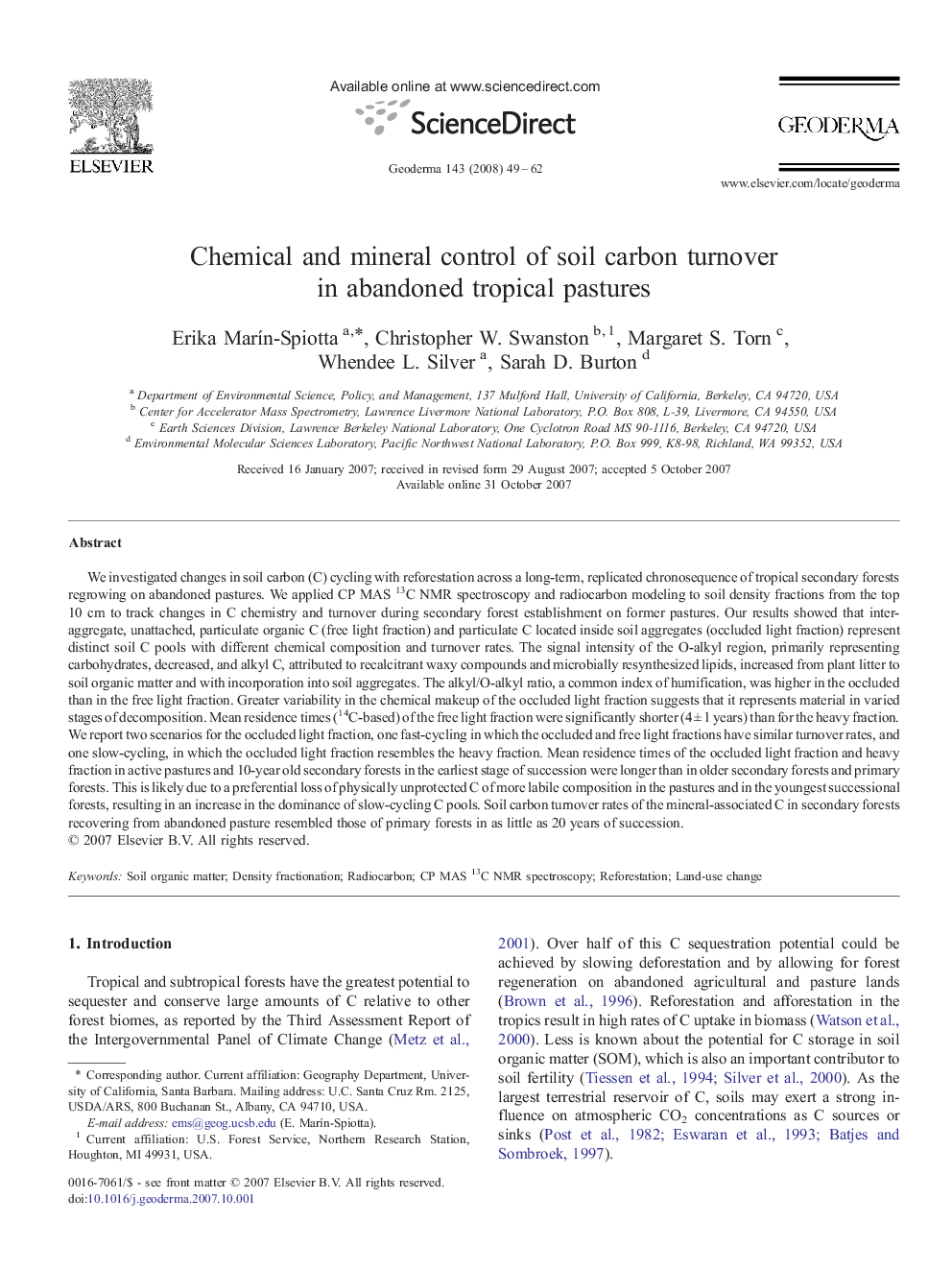| کد مقاله | کد نشریه | سال انتشار | مقاله انگلیسی | نسخه تمام متن |
|---|---|---|---|---|
| 4574826 | 1629547 | 2008 | 14 صفحه PDF | دانلود رایگان |

We investigated changes in soil carbon (C) cycling with reforestation across a long-term, replicated chronosequence of tropical secondary forests regrowing on abandoned pastures. We applied CP MAS 13C NMR spectroscopy and radiocarbon modeling to soil density fractions from the top 10 cm to track changes in C chemistry and turnover during secondary forest establishment on former pastures. Our results showed that inter-aggregate, unattached, particulate organic C (free light fraction) and particulate C located inside soil aggregates (occluded light fraction) represent distinct soil C pools with different chemical composition and turnover rates. The signal intensity of the O-alkyl region, primarily representing carbohydrates, decreased, and alkyl C, attributed to recalcitrant waxy compounds and microbially resynthesized lipids, increased from plant litter to soil organic matter and with incorporation into soil aggregates. The alkyl/O-alkyl ratio, a common index of humification, was higher in the occluded than in the free light fraction. Greater variability in the chemical makeup of the occluded light fraction suggests that it represents material in varied stages of decomposition. Mean residence times (14C-based) of the free light fraction were significantly shorter (4 ± 1 years) than for the heavy fraction. We report two scenarios for the occluded light fraction, one fast-cycling in which the occluded and free light fractions have similar turnover rates, and one slow-cycling, in which the occluded light fraction resembles the heavy fraction. Mean residence times of the occluded light fraction and heavy fraction in active pastures and 10-year old secondary forests in the earliest stage of succession were longer than in older secondary forests and primary forests. This is likely due to a preferential loss of physically unprotected C of more labile composition in the pastures and in the youngest successional forests, resulting in an increase in the dominance of slow-cycling C pools. Soil carbon turnover rates of the mineral-associated C in secondary forests recovering from abandoned pasture resembled those of primary forests in as little as 20 years of succession.
Journal: Geoderma - Volume 143, Issues 1–2, 15 January 2008, Pages 49–62